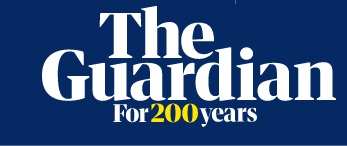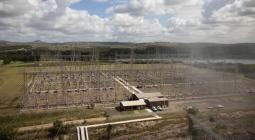Australia’s transition away from fossil fuels ‘not fast enough’ as wind and solar investment lags

Australia’s transition away from fossil fuels is not proceeding fast enough with too few investments in wind and solar farms, according to the head of the Australian Energy Market Operator.
Daniel Westerman, in a speech on Tuesday, will also argue that delays in transmission construction have left the grid vulnerable to the sudden exit of coal-fired power stations.
Westerman says coal plants supply about 60% of the country’s electricity needs but as much as two-thirds of the capacity could leave the grid by 2030.
Renewable energy backed by storage was the cheapest form of new capacity, and there was “a strong pipeline” of proposed new wind and solar plants totalling more than 200 gigawatts of capacity, the Aemo boss will tell the Australian Energy Week 2023 conference. However, whether they would actually be built remained uncertain.
“This investment is not happening fast enough” for what was “the biggest energy system transformation since the introduction of electricity itself”, Westerman says in his written speech.
“Bringing these new projects to market and connecting them into the grid urgently is critical to ensure consumers continue to have reliable power when they need it.”
Westerman’s comments echo those of industry groups, such as the Clean Energy Council, which have warned that the influx of new renewables is faltering and could fall far short of the speed required to meet energy demand and the need to reduce emissions from the power sector. Electricity generation is the country’s largest source of carbon pollution.
States such as New South Wales have recently announced that their plans to accelerate away from fossil fuels are running behind schedule. Snowy Hydro’s giant 2.0 pumped hydro project, the largest energy project in the country, is also years late and facing much higher costs than originally predicted.
Westerman noted that were no new financial commitments on large-scale renewable energy generation signed in the first quarter of 2023. Only a single storage plant secured investment support.
One quarter doesn’t make a trend, but investment decisions are an important leading indicator for our energy transition,” he said.
Aemo was working to support 163 projects with 27GW of capacity in eastern Australia that were at various stages of connection. Securing approval from local communities for the new projects and the power lines linking them was one of the main challenges.
“This situation has been framed in fairly oppositional terms: city versus country; business versus community, infrastructure versus agriculture, David versus Goliath,” Westerman said.
“Landowners in these communities that host transmission towers should be fairly compensated.”
Victoria and NSW have been offering landholders payments over time of $200,000 per kilometre for power lines on their properties and Queensland as much as $300,000.
While large-scale plants will need to increase nine-fold by 2050, rooftop solar is projected to expand five times to reach two in three homes by then.
Rooftop solar already amounted to 15GW of capacity in eastern states, or about a quarter of the total.
“But as the operator who is accountable for system security, huge amounts of rooftop solar can sometimes be a challenge because it is largely invisible and doesn’t yet respond to either market or operational signals,” Westerman said.
More was also needed to be done to improve energy efficiency so less energy was required in the first place. Australia ranked 18th out of 25 nations on the efficient use of energy, lagging countries such as India and Indonesia, he said.
Storage, too, was another challenge. The grid now has about 2GW of capacity in the form of batteries or pumped hydro, a scale that will need to expand 30-fold by 2050.
cover photo:Aemo head Daniel Westerman says whether new wind and solar plants totalling more than 200 gigawatts of capacity are built remains uncertain. Composite: Carly Earl









